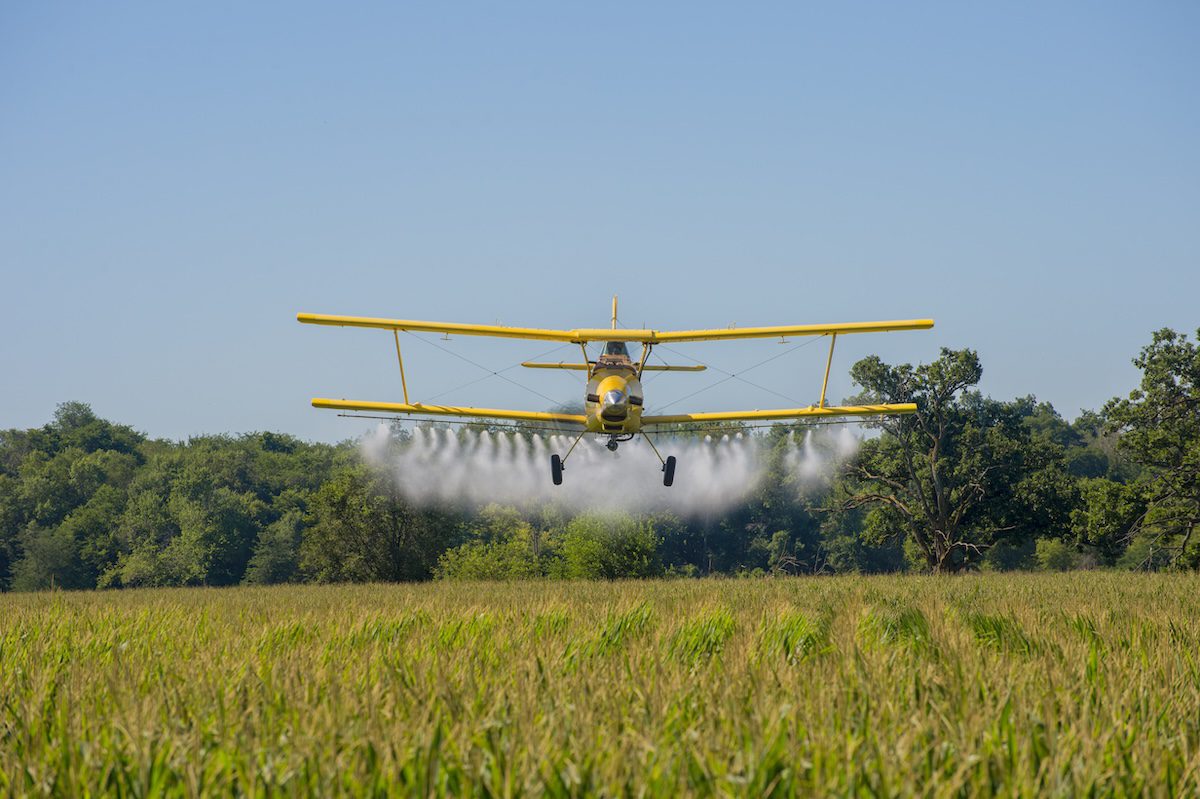
Shutterstock
It’s important to say up front that no one force fully explains the high rates of cancer in Iowa. That’s not how cancer works.
Iowa has the second-highest cancer rate in the United States.
But unlike the vast majority of other states, our numbers keep climbing. Our new series, “The Hot Spot: Investigating Cancer in Iowa,” investigates why Iowa is different. What drives these cases?
It’s important to say up front that no one force fully explains why so many Iowans are getting cancer. That’s not how cancer works. To understand the growth, you have to dig into a confluence of environmental contamination, policy failures, and systemic healthcare gaps that together create what Des Moines oncologist Dr. Richard Deming called “a bath of agricultural chemicals” stretching across the state.
Over the course of this series, Iowa Starting Line will dig into each of these and explore how we got to this place. But for now let’s get a table of contents for our problems:
The biggest culprit might be what’s beneath our feet and flowing from our taps. The US Geological Survey estimates that 1 billion pounds of conventional pesticides are used each year in the United States to control weeds, insects, and other pests. And pound-for-pound, Iowa leads the pack in manure and fertilizer application in agriculture acreage.
Once applied, those chemicals don’t just disappear. They seep into groundwater, drift through the air, and end up in our drinking water at levels that worry health experts. As far back as 2001, scientists have been linking nitrate contamination of drinking water to increased cancer risks.
An estimated 230,000 to 290,000 Iowans rely on private wells for drinking water. A 2019 Iowa Environmental Council analysis found that only 55,000 wells were tested for nitrate, bacteria, or both. Twelve percent of those tested had nitrate averages above the EPA’s legal limit and 40% tested positive for coliform bacteria, likely a result of manure contamination.
Another likely cause: radon.
Radon is an invisible, odorless, radioactive gas that causes lung cancer. It comes out of the soil and rocks that surround the foundations of our offices and homes, and it’s virtually everywhere in Iowa. The US Environmental Protection Agency has reported Iowa has the highest average radon concentration in the country.
Three out of four Iowa homes have radon levels that exceed safety guidelines—also the highest rate in the nation. Exposure to radon is the second leading cause of lung cancer and the leading environmental cause of cancer deaths in the United States, according to the University of Iowa Health Care.
Cancer rates are also exacerbated by our pastimes. The Midwest has a storied local bar tradition. It also has a high alcohol consumption rate. According to the CDC, Iowa has the fourth highest percentage of binge drinking adults at 23.2%. For comparison, #1 went to Washington DC at 24.2% — a one percent difference. And according to the federal National Cancer Institute, alcohol consumption was responsible for about 5%—or nearly 100,000—of the 1.8 million cancer cases diagnosed in the United States in 2019 and about 4%—or nearly 25,000—of the 600,000 US cancer deaths that year
You add on top of that the state’s limited restrictions on tanning beds for teenagers, and tanning beds being an avoidable risk factor for melanoma and non-melanoma skin cancer – both of which may be lethal. You begin to see how multiple risk factors pile up.
The most unsettling part? While cancer rates are dropping in neighboring states like Minnesota and Wisconsin, Iowa stands alone as the only state in the country where they continue to rise. This suggests that the matrix of contributing exposures is creating a problem right here in the Hawkeye state. One with brutal consequences.
Iowa’s agricultural economy doesn’t have to mean accepting higher cancer rates. But it requires us to start asking harder questions about the true costs that our environment, habits and, neighbors inflict on our health.
READ MORE: Cancer in Iowa: Remembering those we’ve lost amid our joy
Support Our Cause
Thank you for taking the time to read our work. Before you go, we hope you'll consider supporting our values-driven journalism, which has always strived to make clear what's really at stake for Iowans and our future.
Since day one, our goal here at Iowa Starting Line has always been to empower people across the state with fact-based news and information. We believe that when people are armed with knowledge about what's happening in their local, state, and federal governments—including who is working on their behalf and who is actively trying to block efforts aimed at improving the daily lives of Iowan families—they will be inspired to become civically engaged.


Surviving cancer in Iowa: Caregivers, advocates share their stories
Cancer in Iowa isn’t just about the research studies and the statistics. Real Iowans and their families are behind each diagnosis. Read our first...

We sent Iowans nitrate tests to check their water. Here’s what they found
This story first appeared in the Sept. 30 edition of the Iowa Starting Line newsletter. Subscribe to our newsletter to get an exclusive first look...

How can policymakers help reduce Iowa’s cancer rates?
This story first appeared in the Sept. 23 edition of the Iowa Starting Line newsletter. Subscribe to our newsletter to get an exclusive first look...

Fighting a health insurance denial? Here are 7 tips to help
By: Lauren Sausser When Sally Nix found out that her health insurance company wouldn’t pay for an expensive, doctor-recommended treatment to ease...

Iowa leads the nation in binge drinking—and faces higher cancer risks from alcohol
This story first appeared in the Sept. 16 edition of the Iowa Starting Line newsletter. Subscribe to our newsletter to get an exclusive first look...

What you can do to reduce your cancer risk: The big six for Iowans
A version of this story first appeared in the Sept. 9 edition of the Iowa Starting Line newsletter. Subscribe to our newsletter to get an exclusive...






